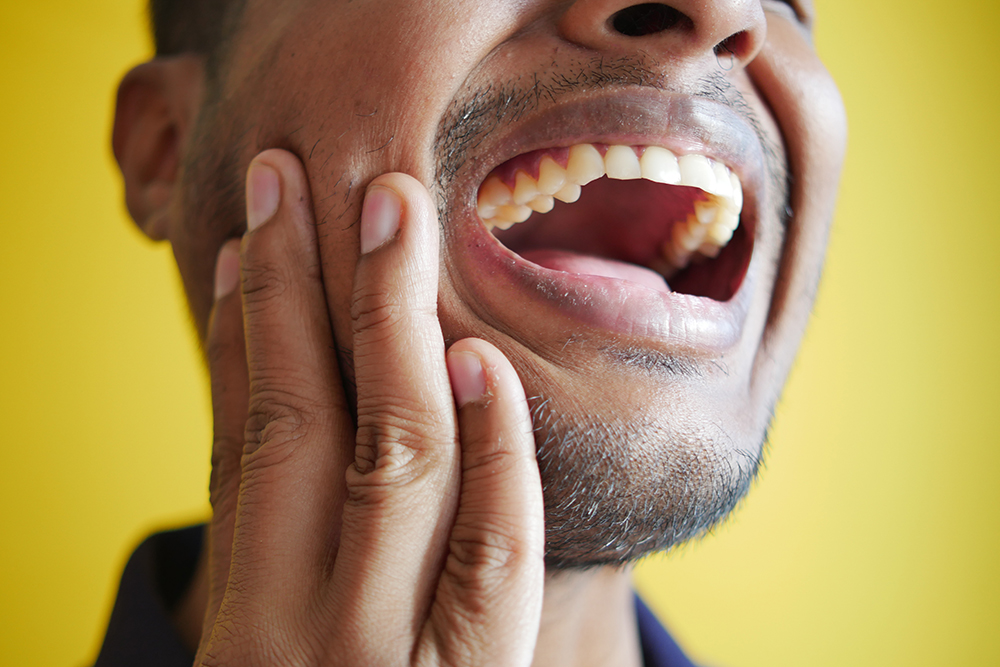Contents
The temporomandibular joint (TMJ) or jaw joint is a synovial joint that allows complex movements to play a role in breathing, speaking and eating. TMJ disorder causes pain in the jaw joint and the muscles that help control movement in the head, neck and shoulders. This pain can spread from the jaw down into the neck. Up to 70% of people who have TMJ disorder can experience pain in their neck.
TMJ and neck pain
The TMJ connects the lower jawbone to the skull. As well as the bones, there are numerous muscles, ligaments and tendons. The complex muscular structure connects the jaw muscles to the muscles of the neck. Tension caused by TMJ disorder can lead to tension, spasms, aches or reduced mobility in the neck.
TMJ disorder doesn’t automatically cause neck pain, and neck pain isn’t automatically a signal of TMJ disorder side effects. They are often related, though. Belgian oral surgeons made the connection between neck pain issues and TMJ in 1998.
Neck pain triggered by TMJ disorder can also lead to headache triggers. The muscular structure of the head and neck are intricately connected. Despite the long connection of issues, it is still common to see people not realize neck pain and TMJ disorder can be interrelated.
How can you tell if your neck pain is caused by TMJ disorder?
If the TMJ disorder pain is felt on one side of the head and the neck pain you’re experiencing is also on the same side, the pain could be related. If the TMJ disorder pain is felt on both sides and the neck pain is also felt on both sides, the pain could be related.
Other effects of TMJ disorder pain
TMJ disorder pain isn’t restricted to causing neck pain. It can also cause other issues, such as:
- Muscular pain when you are chewing, swallowing, yawning or speaking.
- Restricted mouth and jaw movement when opening and closing the mouth.
- Ringing, itchiness or pain in the ears.
- Discomfort in the jaw joint.
- Frequent headaches.
- Pain in the shoulders, scalp or face.
- Cracking, popping or clicking felt in the jaw when opening and closing the mouth.
- Dental issues such as teeth misalignment or teeth grinding.
- Dizziness.
TMJ disorder can be caused by overuse, arthritis, inflammation or jaw injuries.
How is TMJ disorder diagnosed?
A TMJ disorder diagnosis is the first step on the road to pain relief and recovery. A dentist or physician can diagnose TMJ disorder through a physical examination or X-ray. A physical therapist can also evaluate your history, symptoms, and head and neck area to determine if you have TMJ disorder. They can then recommend a course of treatment based on the severity of your condition.
How are TMJ disorder and TMJ disorder-related neck pain treated?
TMJ disorder issues can often resolve on their own, but sometimes additional support is needed. If the TMJ disorder is severe, surgical intervention may be required. Mild to moderate TMJ disorder can respond well to a variety of treatments, including:
- Medication — Your dentist or physician may recommend or prescribe medications to help with your TMJ disorder and neck pain. Over-the-counter NSAIDs and muscle relaxants can help with inflammation and muscle spasms.
- Exercises — Exercises can be done at home to help relieve pain and strengthen muscles. A physical therapist can provide guidance on exercises and number of repetitions to provide the maximum benefit.
- Physical therapy — Physical therapy is an effective, drug-free treatment option to help relieve your TMJ disorder pain and neck pain. With direct access, you do not need a doctor’s referral to seek physical therapy in most states.
How can physical therapy help TMJ disorder and neck pain?
Working with a physical therapist can help you find pain relief and build strength in your jaw. Your physical therapist will design a treatment plan individualized to your specific needs. Physical therapy treatments may include:
- Manual therapy — Your physical therapist may employ soft tissue mobilization or joint mobilization in your treatment. Soft tissue mobilization can help address muscle spasms or tension you are experiencing in your jaw and neck. Joint mobilization can address tension experienced in your neck and jaw. This can help restore proper jaw movement and help relieve pain.
- Iontophoresis — Your physical therapist may use iontophoresis, a noninvasive modality, using an electrical current that delivers medication through the skin of the affected area. This medication can be anti-inflammatory or pain relieving.
- Dry needling — A certified practitioner performs dry needling by manually inserting sterile, thin needles into trigger points in the soft tissue of the affected area. This can provide pain relief and help improve circulation, which can boost healing.
- Instrument-assisted soft tissue mobilization (IASTM) — IASTM is a manual therapy technique that is instrument assisted, intended to help break up scar tissue or tension in the soft tissue of the affected area. This can help relieve inflammation and provide pain relief.
Lattimore PT can help you find relief from neck pain caused by TMJ disorder
TMJ disorder can be an incredibly frustrating condition to deal with. When you are experiencing pain in your jaw and down into your neck, it can make things very complicated. Lattimore Physical Therapy’s team of licensed physical therapists can help you find relief from the pain you are experiencing and help boost your quality of life.
Contact our team today for more information or to schedule an initial appointment.


